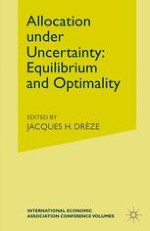1974 | Book
Allocation under Uncertainty: Equilibrium and Optimality
Proceedings from a Workshop sponsored by the International Economic Association
Editor: Jacques H. Drèze
Publisher: Palgrave Macmillan UK
Book Series : International Economic Association Series
Included in: Professional Book Archive
